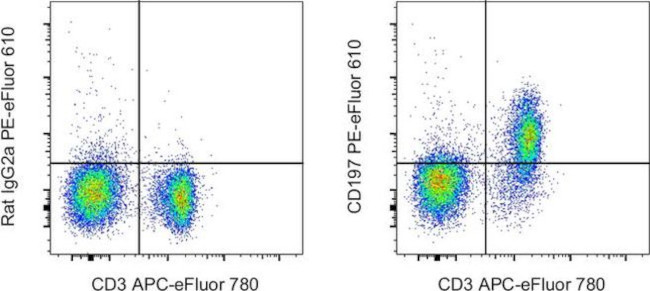Search Thermo Fisher Scientific
Invitrogen
CD197 (CCR7) Monoclonal Antibody (4B12), PE-eFluor™ 610, eBioscience™
图: 1 / 9
CD197 (CCR7) Antibody (61-1971-82) in Flow

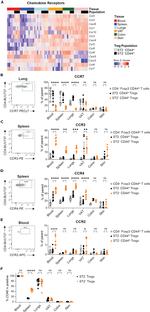
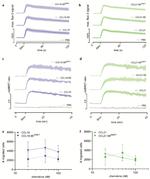
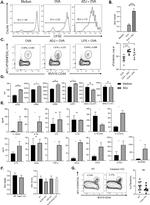
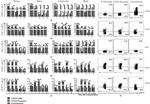

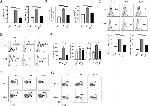
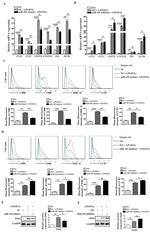
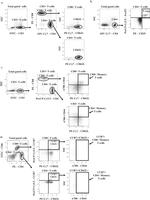
产品信息
61-1971-82
种属反应
已发表种属
宿主/亚型
分类
类型
克隆号
偶联物
激发/发射光谱
形式
浓度
纯化类型
保存液
内含物
保存条件
运输条件
RRID
产品详细信息
Description: The 4B12 monoclonal antibody reacts with mouse CCR7, also known as EBI-1 and CD197. CCR7 is a chemokine receptor for the chemokines CCL19 (CKβ11, ELC, MIP3β, Scya19, Exodus-3) and CCL21 (CKβ9, SLC, MIP2β, Scya21, Exodus-2). In recent years, the role of chemokines in directing the migration of lymphocytes has been well-characterized. One of the most important mediators of homeostatic trafficking of naive T cells to secondary lymphoid organs (SLO) is the chemokine receptor CCR7. Binding of its ligands, CCL19 and CCL21, mediates the trans endothelial migration of T cells across high endothelial venules into SLO. It has also been demonstrated that CCR7 plays a role in the localization of dendritic cells and B cells during an immune response.
CCR7 is a chemokine receptor for the chemokines CCL19 (CKβ11, ELC, MIP3β, Scya19, Exodus-3) and CCL21 (CKβ9, SLC, MIP2β, Scya21, Exodus-2)
In addition to its significant role in the chemotaxis of lymphocytes, human CCR7 has also been recognized as a marker for a distinct subset of memory T cells, the central memory (TCM) population. These cells are characterized by the expression of CCR7 and CD62L and reside within peripheral lymphoid organs. CCR7 also plays a role in thymocyte development and its deficiency leads to disturbed thymic architecture, aberrant T cell development, and limited thymocyte expansion.
For optimal visualization of CCR7 expression on different cell types it is necessary to use multi-color staining to discriminate different cell subsets as well as following the protocol (incubation at 37C may be necessary). To address specificity, the staining profile of 4B12 has been compared to a polyclonal antibody generated against a CCR7 peptide (Bjorkdahl et al). This analysis confirms that the polyclonal antibody and 4B12 stain similar populations of cells. Furthermore, 4B12 stains mouse CCR7-GFP fusion protein-transfected RBL cells (see data in Product # 16-1971-85).
Applications Reported: This 4B12 antibody has been reported for use in flow cytometric analysis.
Applications Tested: This 4B12 antibody has been tested by flow cytometric analysis of mouse splenocytes. This may be used at less than or equal to 1.0 µg per test. A test is defined as the amount (µg) of antibody that will stain a cell sample in a final volume of 100 µL. Cell number should be determined empirically but can range from 10^5 to 10^8 cells/test. It is recommended that the antibody be carefully titrated for optimal performance in the assay of interest.
Important: Staining with the 4B12 monoclonal antibody requires different conditions than typically used for surface-antigen staining. Please use the protocol below. Moreover, we have found that staining at 37°C, rather than 2-8°C, results in brighter 4B12 staining, as well as better resolution between positive and negative populations. Please see data for the PE 4B12 (Product # 12-1971) which demonstrates a comparison of staining at 2-8°C and 37°C. Staining with 4B12 at 37°C is not expected to interfere with co-staining other antigens, however this should be evaluated for individual experiments.
1. Prepare cell suspension as normal and block Fc gamma III R/Fc gamma II R with 5 µg/million cells purified anti-mouse CD16/32 (14-0161) for 15 minutes on ice. If red blood cell lysis is carried out as part of cell preparation, ensure that fixatives are not present in the red blood cell lysis solution as this will eliminate 4B12 staining.
2. Without washing, add 1 µg/million cells 4B12 and incubate in a 37°C water bath or at 2-8°C (please see notes above) for 0.5 hours.
3. Wash cells 1X with 3 mL of Flow Cytometry Staining Buffer (Product # 00-4222) and decant supernatant.
4. Analyze cells on flow cytometer or proceed with secondary staining on ice as normal.
Note: Co-staining mouse CCR7 with the 4B12 antibody and the CCR7 ligand CCL19-Fc (Product # 14-1972) may be difficult due to different binding conditions required for the antibody versus the ligand, and steric hindrance which may prevent co-staining of 4B12 and CCL19-Fc. Cross-blocking experiments have demonstrated that 4B12 binding is able to prevent the detectable binding of CCL19-Fc, however not the opposite. Furthermore, the correlation between 4B12 and CCL19-Fc staining may be difficult to predict due to the presence of unknown CCL19-Fc receptors in addition to CCR7.
PE-eFluor 610 can be excited with laser lines from 488-561 nm and emits at 607 nm. We recommend using a 610/20 band pass filter (equivalent to PE-Texas Red). Please make sure that your instrument is capable of detecting this fluorochrome.
Light sensitivity: This tandem dye is sensitive to photo-induced oxidation. Please protect this vial and stained samples from light.
Fixation: Samples can be stored in IC Fixation Buffer (Product # 00-8222-49) (100 µL of cell sample + 100 µL of IC Fixation Buffer) or 1-step Fix/Lyse Solution (Product # 00-5333-57) for up to 3 days in the dark at 4°C with minimal impact on brightness and FRET efficiency/compensation. Some generalizations regarding fluorophore performance after fixation can be made, but clone specific performance should be determined empirically.
Excitation: 488-561 nm; Emission: 607 nm; Laser: Blue Laser, Green Laser, Yellow-Green Laser.
靶标信息
CCR7 is a member of the G protein coupled receptor family, which is a subfamily of chemokines. CCR7 was identified to be induced by the Epstein Barr virus (EBV), and is thought to be a mediator of EBV effects on B lymphocytes. CCR7 has been reported to be expressed in blood, bone marrow, lymph node, and intestine. CCR7 is particularly expressed in lymphoid tissues and in activated B and T lymphocytes and has been shown to control the migration of memory T cells to inflamed tissues, as well as stimulate dendritic cell maturation. The chemokine (C-C motif) ligand 19 (CCL19/ECL) has been reported to be a specific ligand of this receptor. ESTs have been isolated from blood, embryo, lymph node, and thymus libraries. Receptors for the C - C chemokine family include CCR 1, CCR 2A, CCR 3, CCR 4, CCR 5 and the Duffy blood group antigen. The C-C receptors are important in the function of T cell chemotaxis and migration of phagocytic cells to sites of inflammation.
仅用于科研。不用于诊断过程。未经明确授权不得转售。
How to use the Panel Builder
Watch the video to learn how to use the Invitrogen Flow Cytometry Panel Builder to build your next flow cytometry panel in 5 easy steps.
生物信息学
蛋白别名: C-C chemokine receptor type 7; C-C CKR-7; CD197; chemokine (C-C) receptor 7; EBI1; EBV-induced G-protein coupled receptor 1; Epstein-Barr virus-induced G-protein coupled receptor 1; MIP-3 beta receptor
基因别名: CC-CKR-7; CCR-7; Ccr7; CD197; Cdw197; Cmkbr7; EBI1; Ebi1h
UniProt ID: (Mouse) P47774
Entrez Gene ID: (Mouse) 12775

